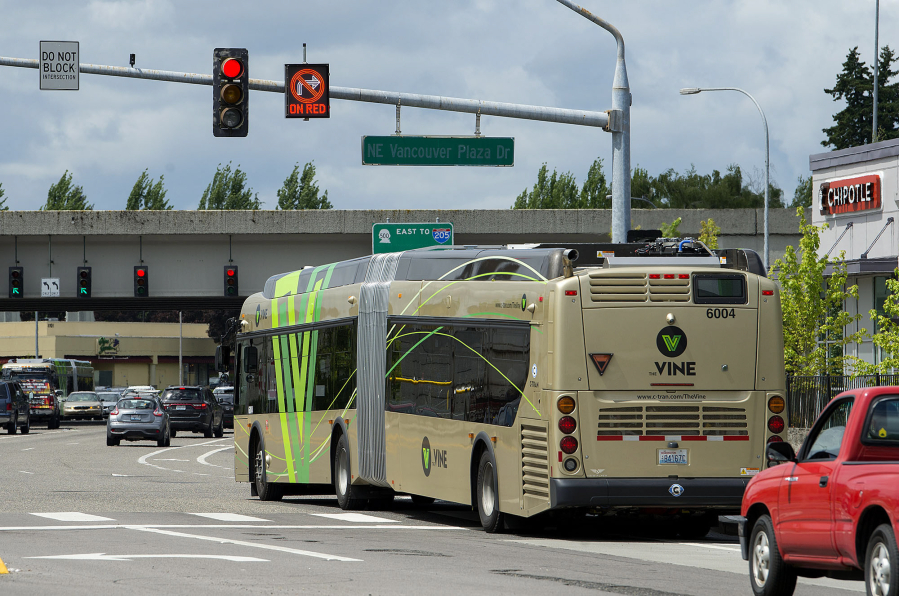C-Tran’s big articulating Vine buses already command attention while they’re rolling down the road, but lately new technology that gives them a head start at intersections has been really turning heads.
If you’re sitting at the intersection of Fourth Plain Boulevard and General Anderson or Thurston Way and North East Vancouver Plaza Drive and you think you see a Vine bus roll through a red light, don’t worry. That’s supposed to happen.
The bus isn’t actually running a light, it’s using a new type of traffic signal called a queue jump, which is designed to get mass transit vehicles to the front of the line.
Although The Vine has been running since January, the queue-jump lights became fully operational recently. C-Tran Spokeswoman Chris Selk said the new system has caught a few drivers by surprise.
“Since they’ve been up and going full bore,” she said, “we’ve had some motorists give us a call saying, ‘Hey, your buses are running red lights.’
“They’re not,” she said.
The system works through an emitter on top of the Vine buses that communicates with the queue-jump signals that are mounted below and to the right of the regular traffic lights. Rather than relying on red and green signals to direct the bus, the signal uses white vertical and horizontal bars. After a Vine bus has served the nearest station, the queue jump gives the bus a 10-second head start through the intersection while the lights are red for everyone else.
Trung Vo, a traffic signal engineer with Vancouver Public Works said the queue jump was part of the initial opening of The Vine, but the system required some fine tuning to give bus drivers more dependable and predictable timing.
“It was discovered shortly after the opening that the GPS signal used to identify the bus and place the queue-jump request did not have the level of accuracy and consistency that was needed, due to the close proximity of the bus stop to the intersection,” he said in an email.
The city and C-Tran found a solution by turning the emitter off as the bus approached the queue-jump intersections. Now buses that approach the queue jumps no longer make early requests or face inconsistent detention by the system.
While the technology is new to Vancouver, queue jumps are a tried and true tool used by transit operators from New York City to Portland.
Queue-jump signals keep buses running on time by reducing delays that are caused by traffic lining up at a stoplight. This is especially important for bus rapid transit routes like The Vine, which typically operate in busy corridors.
“(Queue jumps are) a pretty integral part to bus rapid transit,” and The Vine is no exception, Selk said. “It’s going to be really instrumental at keeping buses on schedule.”




